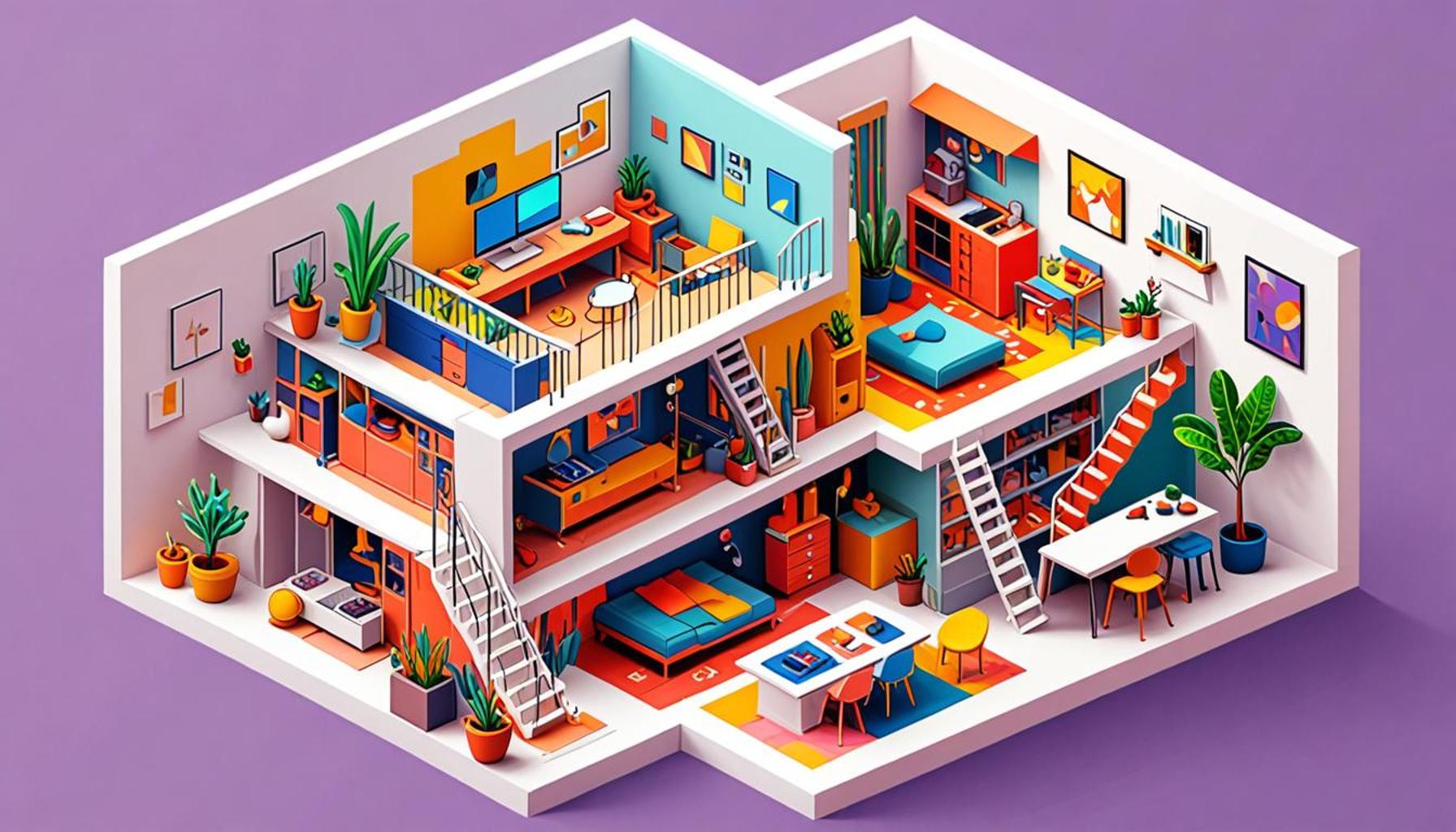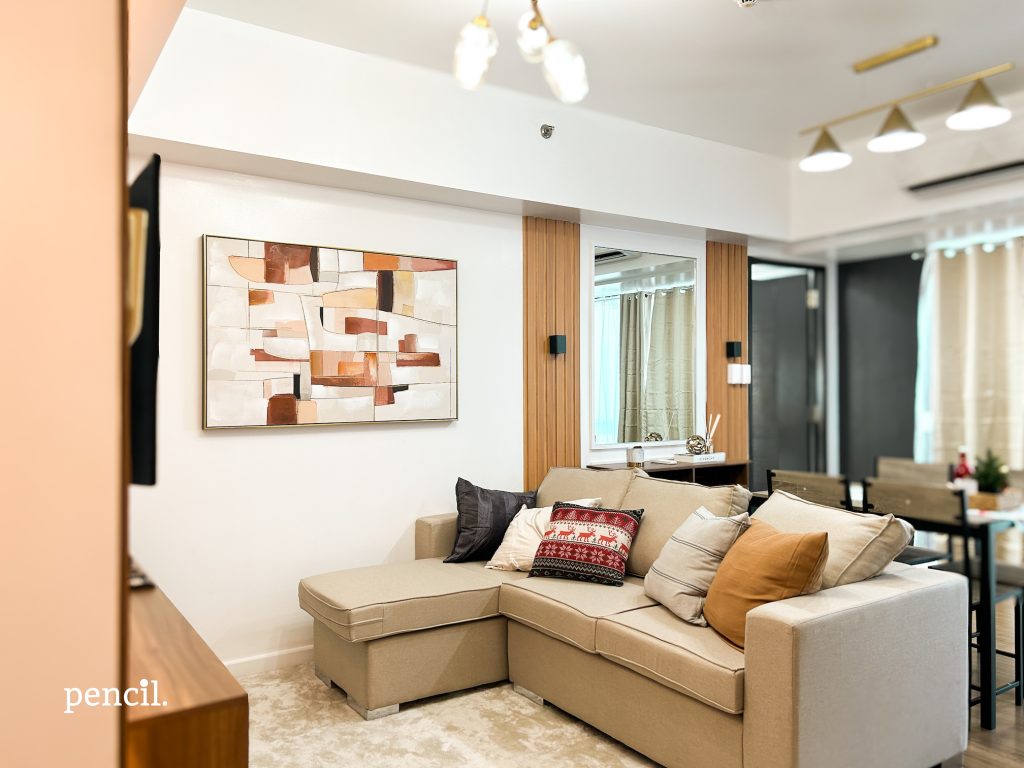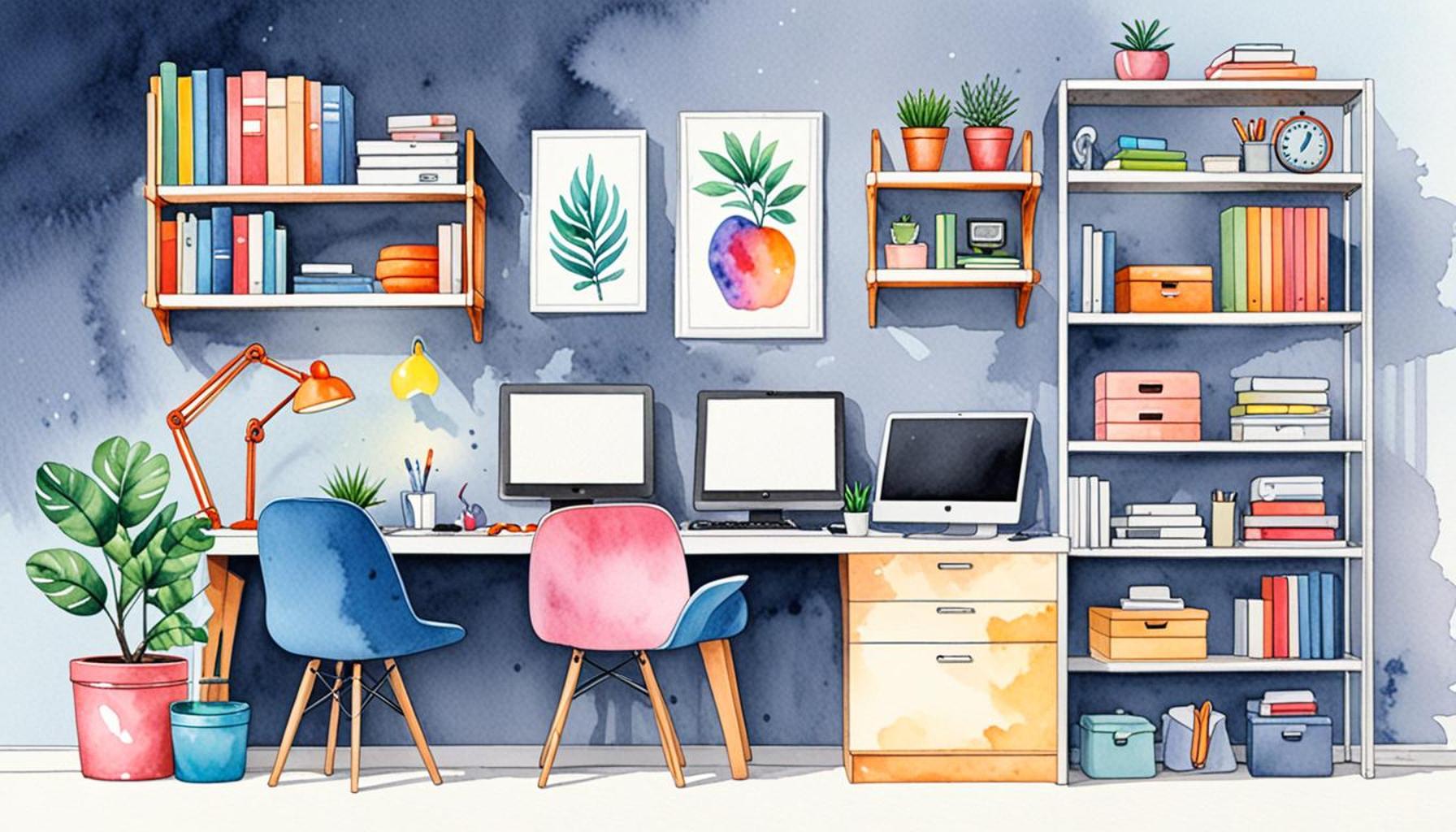Maximizing Small Spaces: Optimization Strategies in Minimalist Environments

In contemporary America, where urbanization continues to rise and housing prices skyrocket, the challenge of living in smaller homes has become increasingly common. As a result, the art of maximizing small spaces has gained prominence, revealing innovative ways to embrace a minimalist lifestyle. This approach not only enhances functionality but also fosters a sense of tranquility and order. By mastering the art of efficient design, individuals can transform their limited living areas into welcoming and practical havens.
Why Optimize Your Space?
While small spaces can pose specific difficulties, they also offer unique opportunities. With appropriate optimization strategies, these environments can be both stylish and efficient. Here are several compelling reasons to consider optimizing your living area:
- Functionality: In a well-optimized space, every item plays a crucial role, significantly minimizing clutter. This is particularly vital in smaller homes where every inch counts, making a concerted effort to choose items that have a dual purpose or that fit neatly away when not in use.
- Aesthetics: A harmonious and cohesive design fosters a sense of calm and comfort, which is essential in a bustling urban environment. For instance, using a consistent color scheme can create a unified look, making the space feel more inviting.
- Efficiency: Smart space utilization can revolutionize daily living. Consider how strategic layouts allow for flowing movement through the area, maximizing the use of corners and tight spots without sacrificing comfort.
Key Features of Minimalist Environments
Minimalism transcends mere design; it embodies a lifestyle choice that values simplicity. The principles of minimalism can significantly benefit those living in smaller spaces. Here are some key features:
- Neutral Color Palettes: Selecting soft, neutral tones like beige, light gray, or pale blues can visually expand the perceived size of a room, creating an airy and spacious feel.
- Multi-functional Furniture: Investing in versatile furniture, such as a sofa bed or a coffee table with storage, enhances usability while keeping spaces tidy. This type of furniture allows for easy transitions between activities throughout the day.
- Strategic Lighting: Maximizing natural light through the use of sheer curtains or mirrors can create an illusion of spaciousness, making rooms feel larger and more open. Well-placed lighting fixtures can also brighten darker areas of a space, improving the overall ambiance.
By harnessing these concepts, individuals can cultivate personal sanctuaries that reflect their style and prioritize functionality. Exploring the best practices for optimizing small spaces can lead to not only a more organized living area but also a more enjoyable and fulfilling living experience. As urban dwellers continue to seek innovative solutions, the movement towards minimalism and efficient space usage sets a precedent for modern living.
DISCOVER MORE: Click here to learn about minimalism and sustainability

Creating a Functional Layout
When faced with the limitations of small spaces, the layout becomes the cornerstone of effective design. Thoughtful planning of furniture arrangements can dramatically enhance usability, allowing residents to fully realize the potential of their environments. Here are some essential strategies to consider when crafting a functional layout:
- Open Floor Plans: Consider adopting an open floor plan that minimizes barriers between different rooms. This design philosophy not only maximizes natural light but also creates the illusion of larger spaces, making areas feel more expansive. For instance, merging a living room with a dining area can foster a sense of unity and facilitate social interactions.
- Zone Creation: Use furniture placement to create distinct zones within your small space. By positioning a sofa to delineate a living area from a workspace, you can introduce functional diversity without the need for bulky dividers. This method effectively optimizes space while still allowing the area to flow seamlessly.
- Vertical Space Utilization: In smaller environments, floor space is often at a premium, making vertical storage solutions accessible. Installing shelves or cabinets that reach the ceiling can drastically increase storage potential, while also drawing the eye upward, creating the perception of height in the room.
Another vital component of small space design is the choice of furniture. Opting for pieces that can serve multiple functions can significantly reduce clutter and maximize usable surface area. For example, a fold-out table can serve as both a dining area and a workspace, swiftly adapting to the needs of the moment. Similarly, using ottomans with hidden storage can keep items discreetly tucked away while providing extra seating when needed.
Incorporating Smart Storage Solutions
As the old adage goes, “A place for everything and everything in its place.” This principle is particularly crucial when living in small environments. Effective organization not only boosts efficiency but also contributes to a peaceful atmosphere. Here are practical storage innovations worth exploring:
- Under-Bed Storage: One often-overlooked area is space beneath the bed. Utilizing rolling bins or drawers can keep seasonal clothing or extra linens out of sight yet easily accessible.
- Multi-Use Furniture: A bench with built-in storage at the entryway can serve as a seat to put on shoes while simultaneously offering a spot to stow bags or outdoor gear. Likewise, coffee tables with compartments for remote controls or books can keep surfaces tidier.
- Magnetic Strips: Install magnetic strips in the kitchen or bathroom to keep small metal items, like spices or tools, neatly arranged and off countertops. This small adjustment can free up valuable real estate.
By thoughtfully configuring layouts and integrating smart storage solutions, individuals can cultivate more than just functional living quarters; they can create environments that inspire and rejuvenate. As the quest for efficiency continues, these optimization strategies in minimalist environments prove to be a guiding principle for maximizing small spaces.
Maximizing Small Spaces: Optimization Strategies in Minimalist Environments
In an era where urban living often means restricted square footage, implementing effective optimization strategies has become an essential skill for those embracing minimalist lifestyles. The art of maximizing small spaces revolves around several key principles, each designed to enhance functionality while maintaining a sense of style and tranquility. Techniques such as utilizing vertical storage, selecting multi-functional furniture, and maintaining an uncluttered environment serve as the foundation for transforming cramped quarters into serene sanctuaries.
One of the most effective strategies is incorporating vertical elements into your design plan. Shelving units that extend toward the ceiling can free up valuable floor space while accommodating books, decor, and everyday items. In addition, hooks and hangers can transform bare walls into practical storage spots for everything from bicycles to kitchen utensils, adding both utility and aesthetic appeal.
Multi-functional furniture is another crucial aspect of maximizing space. Investing in pieces that serve dual purposes—such as ottomans with hidden storage or fold-out desks—can significantly reduce the clutter that often plagues smaller environments. When selecting furniture, favor those with clean lines and a light color palette to enhance the feeling of spaciousness.
Moreover, utilizing mirrors strategically can dramatically affect the perception of space within a room. A well-placed mirror can reflect light and create an illusion of depth, making even the tiniest area feel larger and brighter.
In terms of decor, less is often more. A minimalist approach encourages the selection of fewer, but high-quality items. This not only helps in avoiding a cluttered look but also allows each piece to stand out, contributing to a cohesive aesthetic. It’s advisable to choose versatile colors and materials that harmonize, facilitating a tranquil atmosphere free of visual chaos.
| Category | Advantages |
|---|---|
| Vertical Storage | Maximizes floor space and organizes frequently used items. |
| Multi-Functional Furniture | Offers versatility and reduces clutter while enhancing usability. |
By carefully considering the principles of minimalism and strategically implementing these optimization strategies, anyone can cultivate a living space that is not only comfortable but also beautifully designed. Redefining how we perceive and use our spaces leads to a lifestyle that embraces simplicity, efficiency, and serene living.
DISCOVER MORE: Click here to discover innovative solutions
Choosing the Right Decor
In maximizing small spaces, decor plays a pivotal role. The right decorative elements can not only beautify a room but also serve practical purposes. Here are key considerations that can elevate your space while adhering to the minimalist ethos:
- Light Colors and Reflective Surfaces: Employing a palette of light colors—whites, soft grays, and beiges—can make a room appear larger and airier. Incorporating reflective surfaces, such as mirrors, not only adds a stylish element but also enhances natural light, further amplifying the sense of openness.
- Minimalist Art: In small spaces, less is more when it comes to decoration. Opting for a single, impactful piece of art can serve as a focal point, drawing the eye without overwhelming the senses. Consider large canvases or oversized prints that command attention and maintain simplicity.
- Plants as Decor: Integrating plants can breathe life into a compact area. Not only do plants improve air quality, but choosing smaller varieties, such as succulents or hanging vines, can add greenery without consuming valuable floor space. Wall-mounted planters can also create a unique visual impact while utilizing vertical space.
Smart Lighting Solutions
Lighting is another essential element that can transform a small space. Effective lighting strategies can dramatically improve functionality and aesthetics. Here’s how to make the most of your lighting:
- Layered Lighting: Implement a combination of ambient, task, and accent lighting to create a warm and inviting atmosphere. Use floor lamps and table lamps to offer focused light in specific areas, thereby enhancing usability without occupying excessive space.
- Wall Sconces: Wall-mounted lighting fixtures are ideal for small environments, as they free up valuable surface area while providing necessary illumination. They can be strategically placed to highlight artwork or architectural features, adding depth and interest.
- Adjustable Fixtures: Consider installing adjustable or dimmable lights to customize your ambiance. These flexible solutions allow you to control brightness based on your needs, transforming a room from a work-focused space to a relaxing environment with ease.
Embracing Technology
In today’s digital age, technology can play a significant role in optimizing small spaces. The advent of smart home technology provides innovative ways to manage smaller environments efficiently:
- Smart Furniture: Explore furniture that includes built-in technology, such as desks with wireless charging capabilities or sofas equipped with USB ports. These investments can streamline daily routines and reduce the clutter of multiple gadgets.
- Smart Home Devices: Smart speakers or lighting systems can create convenience in a minimalist setting. By controlling your environment through voice commands or an app, you can minimize physical clutter while enhancing your living experience.
- Virtual Reality Planning: Leverage virtual reality applications to visualize potential arrangements of furniture and decor in your space. These tools can be instrumental in making informed decisions that align with your minimalist design goals.
By carefully selecting decor, implementing innovative lighting solutions, and integrating smart technology, individuals can further optimize small spaces to reflect functionality and style. These aspects are crucial for anyone looking to create a harmonious living environment while adhering to minimalist principles.
DIVE DEEPER: Click here to uncover more insights
Conclusion
In the pursuit of maximizing small spaces, strategic optimization emerges as a beacon of creativity and practicality. By combining thoughtful decor choices, efficient lighting solutions, and innovative technology, individuals can transform compact environments into inspirational sanctuaries. The essence of minimalism lies not just in reducing clutter but in enhancing the quality of life through intentional living.
Adopting light colors and reflective surfaces helps to expand the perception of space while minimalist art and greenery create focal points that enrich the ambiance without overwhelming. Implementing layered and adjustable lighting techniques fosters a welcoming atmosphere, dynamically tailored to momentary needs. Furthermore, integrating smart technology with furnishings and devices not only enhances usability but can also streamline daily routines in a clutter-free manner.
This holistic approach not only effectively utilizes every inch but also celebrates the beauty of simplicity, making every space uniquely personal and functional. As urban living continues to trend towards smaller homes and apartments, embracing these strategies is essential for anyone looking to cultivate a harmonious environment. In sum, with the right strategies, even the most compact spaces can thrive, offering both comfort and style in our daily lives. As you embark on your journey to minimize and optimize, remember that true creativity lies in the art of restraint, and the potential of your small space awaits discovery.


